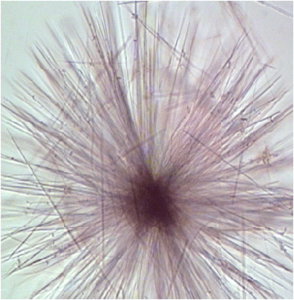 Elevated levels of an amino acid, tyrosine, alter development and longevity in animals and may contribute to the development of diabetes in people, new research from the UT Health Science Center at San Antonio indicates. This line of study could potentially lead to a novel way to prevent or treat the disease. The research is reported in PLOS Genetics, a journal of the Public Library of Science.
Elevated levels of an amino acid, tyrosine, alter development and longevity in animals and may contribute to the development of diabetes in people, new research from the UT Health Science Center at San Antonio indicates. This line of study could potentially lead to a novel way to prevent or treat the disease. The research is reported in PLOS Genetics, a journal of the Public Library of Science.
Evidence of a direct effect in diabetes
Tyrosine is increased in the blood of people who are obese or diabetic, said study senior author Alfred Fisher, M.D., Ph.D., of the Barshop Institute for Longevity and Aging Studies at the UT Health Science Center. Among people who are obese, those at the highest risk of developing diabetes tend to have higher tyrosine levels. “It was unknown whether this was simply a marker of diabetes risk or could be playing a direct role in the disease,” Dr. Fisher said. “Our work suggests that tyrosine has a direct effect.”
Dr. Fisher is a physician scientist with the Barshop Institute’s Center for Healthy Aging and the Geriatric Research, Education and Clinical Center of the South Texas Veterans Health Care System. He has studied tyrosine’s effect on insulin signaling in an animal model called C. elegans (roundworms) since 2005. The observation that tyrosine was elevated in human diabetics further spurred the research. Now he is ready to take research insights back into people.
Concept to be tested in humans
“This will be tested in small human clinical trials,” Dr. Fisher said. “Our team will augment tyrosine levels in study participants for a short period and observe whether this changes the ability of the body to respond to insulin, which is a key hormone involved in controlling blood sugar levels. This will not be detrimental to participants, as the increase will be transient and well below the level of what is clinically relevant.”
As a postdoctoral fellow at the University of California, San Francisco, Dr. Fisher found that increasing the levels of tyrosine in roundworms promoted their longevity. Worms with mutations of certain genes lived 10 percent to 20 percent longer. One combination of genetic mutations produced an almost 60 percent increase in life span.
Same inhibition, different effects
“In both humans and worms, the effect is due to an inhibition of insulin signaling,” Dr. Fisher said. “Interfering with this pathway produces longevity in worms, whereas in people it leads to insulin resistance and an elevated risk of developing diabetes.”
Tyrosine has been studied for decades, but few if any research groups have made the connection between tyrosine and diabetes.
New thinking about amino acids’ roles
“The key concept that comes out of our latest paper is, rather than amino acids being only building blocks in our bodies, they are detected and produce changes in physiology, including potentially undesirable ones such as diabetes in humans,” Dr. Fisher said.
Source: Annabel A. Ferguson, Sudipa Roy, Kaitlyn N. Kormanik, Yongsoon Kim, Kathleen J. Dumas, Vladimir B. Ritov, Dietrich Matern, Patrick J. Hu, Alfred L. Fisher. TATN-1 Mutations Reveal a Novel Role for Tyrosine as a Metabolic Signal That Influences Developmental Decisions and Longevity inCaenorhabditis elegans. PLoS Genetics, 2013; 9 (12): e1004020 DOI:10.1371/journal.pgen.1004020














